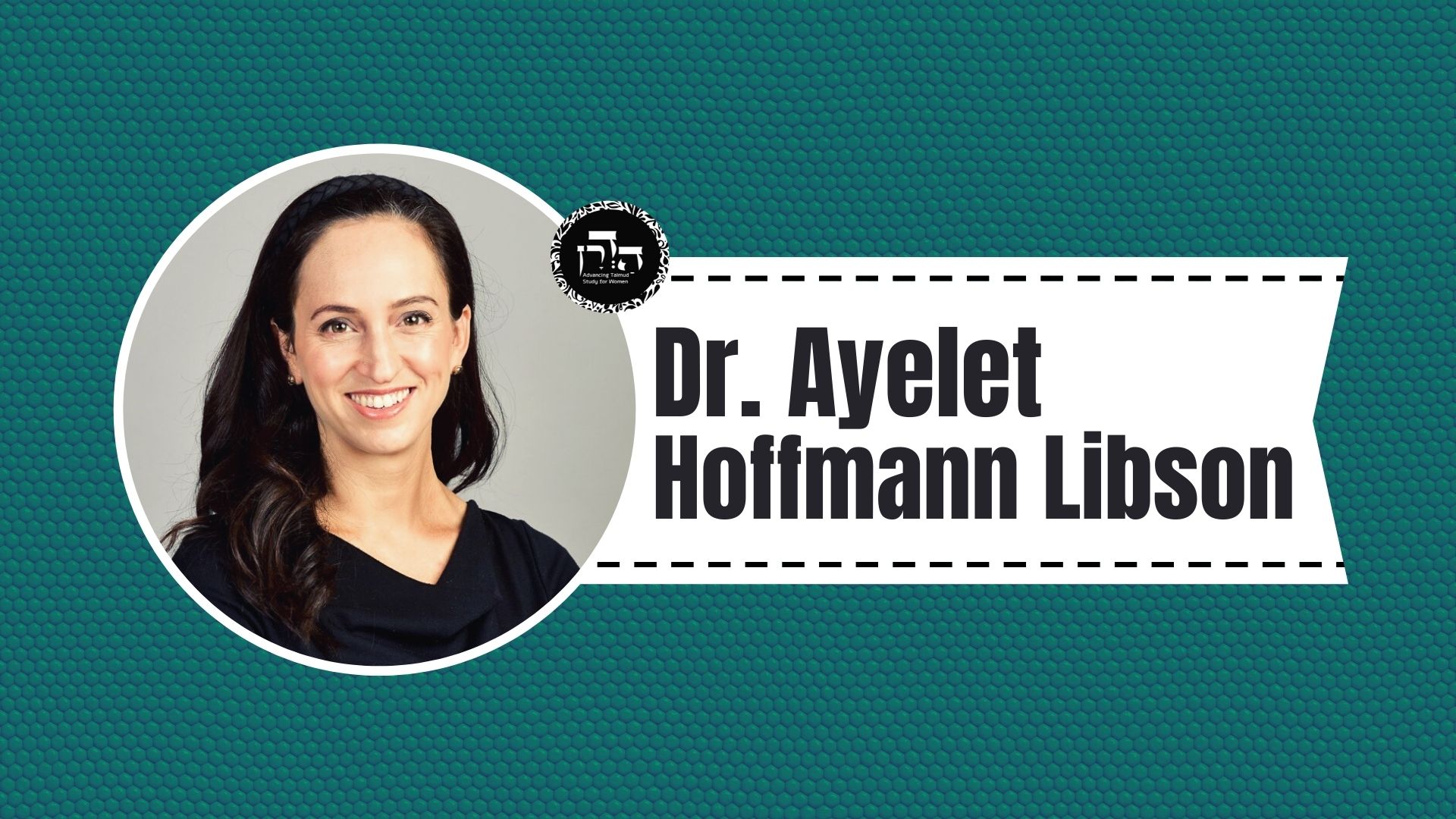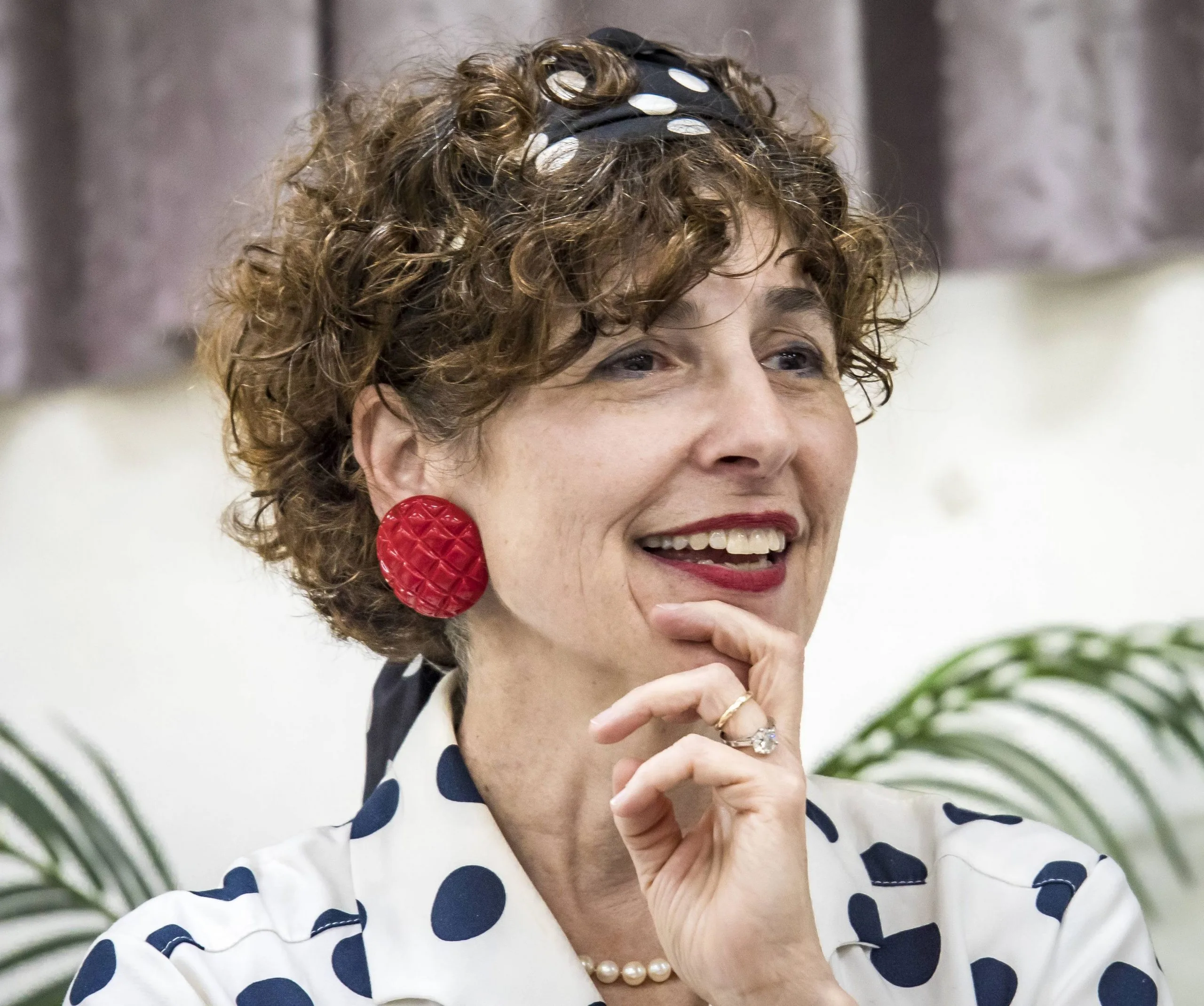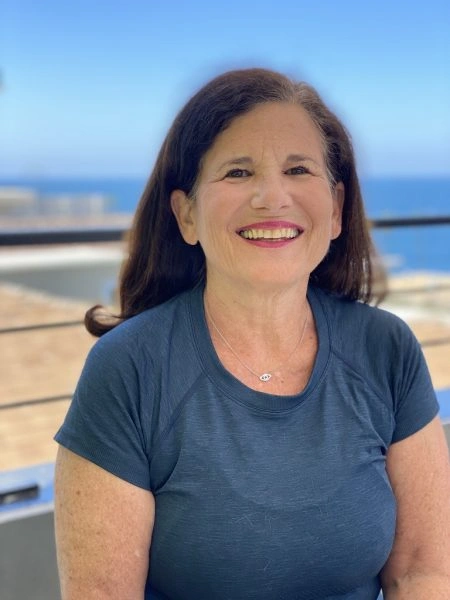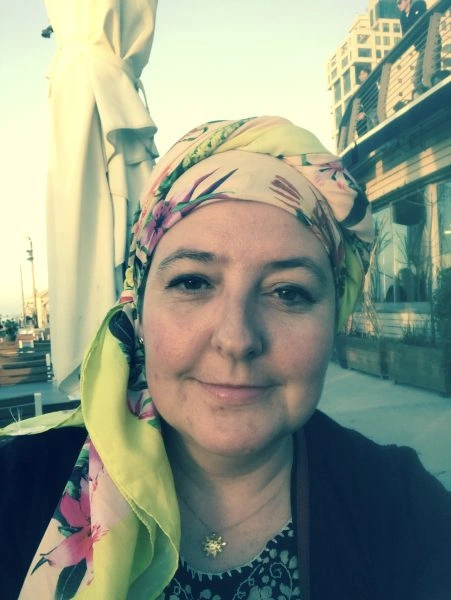There are those who can testify but not be judges – this is referring to one who is blind in one eye. However this is a source of debate. Are women able to be judges? There are foods that are suceptible to impurities but not obligated in tithes. There are those obligated in tithes and not in peah (leaving over the corner of the field). The gemara brings a statement of Rabbi Yochanan regarding impurity of foods and from there it’s derived that having intention that one wants to eat something that isn’t normally eaten is only effective once it is detached from the ground. Rava brings a proof for this from the mishna but his proof is rejected. The gemara brings a debate regarding a case of a kosher dead bird regarding the issue of intent to eat and the gemara clarifies in what case is there a debate.
This week’s learning is sponsored by Audrey Mondrow in memory of Irving “Poppy” Mauskopf, Yechezkel ben Rachel and Avraham. “A man that exemplified complete emuna. He greeted everyone with a smile. We were all very privileged to have him in our lives. May his neshama have an aliya.”
Want to dedicate learning? Get started here:


Today’s daily daf tools:
This week’s learning is sponsored by Audrey Mondrow in memory of Irving “Poppy” Mauskopf, Yechezkel ben Rachel and Avraham. “A man that exemplified complete emuna. He greeted everyone with a smile. We were all very privileged to have him in our lives. May his neshama have an aliya.”
Today’s daily daf tools:
Delve Deeper
Broaden your understanding of the topics on this daf with classes and podcasts from top women Talmud scholars.
New to Talmud?
Check out our resources designed to help you navigate a page of Talmud – and study at the pace, level and style that fits you.
The Hadran Women’s Tapestry
Meet the diverse women learning Gemara at Hadran and hear their stories.
Niddah 50
רַבִּי מֵאִיר הִיא, דְּתַנְיָא: הָיָה רַבִּי מֵאִיר אוֹמֵר, מָה תַּלְמוּד לוֹמַר ״עַל פִּיהֶם יִהְיֶה כׇּל רִיב וְכׇל נָגַע״? וְכִי מָה עִנְיָן רִיבִים אֵצֶל נְגָעִים? מַקִּישׁ רִיבִים לִנְגָעִים: מָה נְגָעִים בַּיּוֹם, דִּכְתִיב ״וּבְיוֹם הֵרָאוֹת בּוֹ״, אַף רִיבִים בַּיּוֹם.
It is the opinion of Rabbi Meir, as it is taught in a baraita that Rabbi Meir would say: What is the meaning when the verse states: “According to their word shall every dispute and every leprous mark be” (Deuteronomy 21:5)? What do disputes have to do with leprous marks? The verse juxtaposes disputes to leprous marks, to teach that just as leprous marks are viewed by a priest only in the daytime, as it is written with regard to leprous marks: “And on the day when raw flesh appears in him he shall be impure” (Leviticus 13:14), so too, disputes are adjudicated only in the daytime.
וּמָה נְגָעִים שֶׁלֹּא בְּסוֹמֵא, דִּכְתִיב: ״לְכׇל מַרְאֵה עֵינֵי הַכֹּהֵן״, אַף רִיבִים שֶׁלֹּא בְּסוֹמֵא. וּמַקִּישׁ נְגָעִים לְרִיבִים, מָה רִיבִים שֶׁלֹּא בִּקְרוֹבִים, אַף נְגָעִים שֶׁלֹּא בִּקְרוֹבִים.
And just as leprous marks are seen by priests who can see, but not by blind priests, as it is written: “As far as appears to the priest” (Leviticus 13:12), which teaches that they must be viewed by priests who can see with both eyes, so too, disputes are not adjudicated by blind judges, even if they are blind in only one eye. And the verse juxtaposes leprous marks to disputes to teach that just as disputes may not be judged by relatives of the litigants, so too, leprous marks may not be viewed by a priest who is a relative of the afflicted party.
אִי מָה רִיבִים בִּשְׁלֹשָׁה, אַף נְגָעִים בִּשְׁלֹשָׁה? וְדִין הוּא: מָמוֹנוֹ בִּשְׁלֹשָׁה, גּוּפוֹ לֹא כׇּל שֶׁכֵּן? תַּלְמוּד לוֹמַר ״וְהוּבָא אֶל אַהֲרֹן הַכֹּהֵן אוֹ אֶל אַחַד מִבָּנָיו הַכֹּהֲנִים״, הָא לָמַדְתָּ שֶׁאֲפִילּוּ כֹּהֵן אֶחָד רוֹאֶה אֶת הַנְּגָעִים.
The baraita continues: If these two halakhot are compared, one can also say that just as disputes are judged specifically by three judges, so too, leprous marks must be viewed by three priests. And this suggestion is supported by a logical inference: If a case that only involves one’s money is adjudicated by three judges, all the more so is it not clear that leprous marks, which afflict the person himself, should be viewed by three priests? To counter this notion, the verse states: “And he shall be brought to Aaron the priest or to one of his sons, the priests” (Leviticus 13:2). You have learned from this that even one priest may view leprous marks.
הָהוּא סַמְיָא דַּהֲוָה בְּשִׁבָבוּתֵיהּ דְּרַבִּי יוֹחָנָן, דַּהֲוָה קָדָיֵין דִּינָא, וְלָא קָאָמַר לֵיהּ וְלָא מִידֵּי. הֵיכִי עָבֵיד הָכִי? וְהָאָמַר רַבִּי יוֹחָנָן: הֲלָכָה כִּסְתַם מִשְׁנָה!
The Gemara relates: There was a certain blind person who was living in the neighborhood of Rabbi Yoḥanan who would render judgments, and Rabbi Yoḥanan did not say anything to him. The Gemara asks: How could Rabbi Yoḥanan do this? But didn’t Rabbi Yoḥanan himself say that the halakha is in accordance with the ruling of an unattributed mishna?
וּתְנַן: כׇּל הַכָּשֵׁר לָדוּן — כָּשֵׁר לְהָעִיד, וְיֵשׁ כָּשֵׁר לְהָעִיד וְאֵין כָּשֵׁר לָדוּן, וְאָמְרִינַן: לְאֵתוֹיֵי מַאי? וְאָמַר רַבִּי יוֹחָנָן: לְאֵתוֹיֵי סוֹמֵא בְּאַחַת מֵעֵינָיו.
And we learned in the mishna: Any person who is fit to adjudicate a case and serve as a judge is fit to testify as a witness, and there are those who are fit to testify but are not fit to adjudicate. And we said: What is added by this halakha, and Rabbi Yoḥanan said: It serves to add one who is blind in one of his eyes, as he is fit to testify but unfit to judge. Since Rabbi Yoḥanan evidently maintains that one who is blind even in one of his eyes is not fit to judge, why did he not admonish this judge?
רַבִּי יוֹחָנָן סְתָמָא אַחֲרִינָא אַשְׁכַּח, דִּתְנַן: דִּינֵי מָמוֹנוֹת דָּנִין בַּיּוֹם, וְגוֹמְרִין בַּלַּיְלָה.
The Gemara answers: Rabbi Yoḥanan found another unattributed mishna which indicates a different conclusion. As we learned in the mishna in tractate Sanhedrin (32a): In cases of monetary law, the court judges during the daytime, and concludes the deliberations and issues their ruling even at night. This is not the halakha with regard to leprous marks, which may not be viewed at night at all. Accordingly, one does not compare judging cases of monetary law to viewing leprous marks. Since this comparison was the source for disqualifying a blind judge, one cannot derive from it that a blind judge is disqualified.
וּמַאי אוּלְמֵיהּ דְּהַאי סְתָמָא מֵהַאי סְתָמָא? אִיבָּעֵית אֵימָא: סְתָמָא דְּרַבִּים עֲדִיף, וְאִיבָּעֵית אֵימָא: מִשּׁוּם דְּקָתָנֵי לַהּ גַּבֵּי הִלְכְתָא דְּדִינֵי.
The Gemara asks: And in what manner is the strength of that unattributed mishna in tractate Sanhedrin greater than the strength of this unattributed mishna here? Why did Rabbi Yoḥanan accept the ruling of that mishna? The Gemara explains: If you wish, say that an unattributed mishna that records the opinion of many Sages, as in Sanhedrin, is preferable, whereas the mishna here was established as in accordance with the individual opinion of Rabbi Meir. And if you wish, say instead that it is because the mishna in Sanhedrin teaches this halakha in the context of the halakhot of judges. Since that chapter is the primary source for all of the halakhot of court matters, its rulings are of greater weight.
מַתְנִי’ כֹּל שֶׁחַיָּיב בַּמַּעַשְׂרוֹת — מִטַּמֵּא טוּמְאַת אֳוכָלִין, וְיֵשׁ שֶׁמִּטַּמֵּא טוּמְאַת אֳוכָלִין וְאֵינוֹ חַיָּיב בַּמַּעַשְׂרוֹת.
MISHNA: Any food from which one is obligated to separate tithes becomes impure with the ritual impurity of food; and there is food that becomes impure with the ritual impurity of food but from which one is not obligated to separate tithes.
גְּמָ’ לְאֵתוֹיֵי מַאי? לְאֵתוֹיֵי בָּשָׂר וְדָגִים וּבֵיצִים.
GEMARA: The Gemara asks: What is added by the last clause of this mishna? The Gemara answers: This serves to add meat, fish, and eggs. Although they are subject to the ritual impurity of food, one is not obligated to separate tithes from them.
מַתְנִי’ כֹּל שֶׁחַיָּיב בַּפֵּאָה — חַיָּיב בַּמַּעַשְׂרוֹת, וְיֵשׁ שֶׁחַיָּיב בַּמַּעַשְׂרוֹת וְאֵינוֹ חַיָּיב בַּפֵּאָה.
MISHNA: With regard to any produce from which one is obligated to designate produce in the corner of the field given to the poor [pe’a], as commanded in the Torah (see Leviticus 19:9, 23:22), one is obligated to separate tithes from it; and there is produce from which one is obligated to separate tithes but from which one is not obligated to designate pe’a.
גְּמָ’ לְאֵתוֹיֵי מַאי? לְאֵתוֹיֵי תְּאֵנָה וְיָרָק, שֶׁאֵינוֹ חַיָּיב בַּפֵּאָה. דִּתְנַן: כְּלָל אָמְרוּ בַּפֵּאָה — כֹּל שֶׁהוּא אוֹכֶל, וְנִשְׁמָר, וְגִידּוּלוֹ מִן הָאָרֶץ, וּלְקִיטָתוֹ כְּאֶחָד, וּמַכְנִיסוֹ לְקִיּוּם — חַיָּיב בַּפֵּאָה.
GEMARA: The Gemara asks: What is added by the last clause of the mishna? The Gemara answers: It serves to add figs and vegetables, for which one is not obligated to designate pe’a, although the obligation of tithes does apply to them. As we learned in a mishna (Pe’a 1:4): The Sages stated a principle with regard to the halakhot of pe’a: With regard to anything that is food, and is protected, and that grows from the earth, and is gathered as one, i.e., there is one fixed time for gathering it, and that one brings in to store for preservation, its owner is obligated to designate pe’a.
אוֹכֵל — לְמַעוֹטֵי סְפִיחֵי סְטֵיס וְקוֹצָה, וְנִשְׁמָר — לְמַעוֹטֵי הֶפְקֵר, וְגִידּוּלוֹ מִן הָאָרֶץ — לְמַעוֹטֵי כְּמֵהִים וּפִטְרִיּוֹת, וּלְקִיטָתוֹ כְּאֶחָד — לְמַעוֹטֵי תְּאֵנָה, וּמַכְנִיסוֹ לְקִיּוּם — לְמַעוֹטֵי יָרָק.
The Gemara analyzes each criterion of the mishna. The clause: Anything that is food, serves to exclude the sefiḥin, produce that grew without being intentionally planted, of woad [setim] and safflower [vekotza]. These plants are used as dyes rather than for food. The clause: And is protected, serves to exclude ownerless crops, which no one protects. The clause: And grows from the earth, serves to exclude truffles and mushrooms, which do not draw sustenance from the ground. The clause: And is gathered as one, serves to exclude the fig tree, whose fruit is gathered over an extended period, as the figs do not all ripen at the same time. Finally, the clause: And that one brings in to storage for preservation, serves to exclude vegetables, which cannot be stored for lengthy periods.
וְאִילּוּ גַּבֵּי מַעֲשֵׂר תְּנַן: כֹּל שֶׁהוּא אוֹכֶל, וְנִשְׁמָר, וְגִידּוּלוֹ מִן הָאָרֶץ — חַיָּיב בַּמַּעַשְׂרוֹת, וְאִילּוּ לְקִיטָתוֹ כְּאֶחָד, וּמַכְנִיסוֹ לְקִיּוּם — לָא קָתָנֵי.
And yet in the case of tithe, we learned in a mishna (Ma’asrot 1:1) with regard to the halakhot of tithes: Anything that is food, and is protected, and grows from the earth is obligated in tithes. And whereas some of the conditions overlap, the following criteria are not taught with regard to tithes: Gathered as one, and that one brings in to storage for preservation. Evidently, the obligation of tithes applies to fig trees and vegetables, despite the fact that the obligation of pe’a does not apply.
אִם הָיוּ בָּהֶם שׁוּמִים וּבְצָלִין — חַיָּיבִין, דִּתְנַן: מַלְבְּנוֹת בְּצָלִים שֶׁבֵּין הַיָּרָק, רַבִּי יוֹסֵי אוֹמֵר: פֵּאָה מִכׇּל אַחַת וְאֶחָת, וַחֲכָמִים אוֹמְרִים: מֵאַחַת עַל הַכֹּל.
The Gemara notes that if these vegetables that are exempt from pe’a contained garlic and onions, which are stored for an extended period of time, then they are obligated in pe’a as well. As we learned in a mishna (Pe’a 3:4): If one has garden beds of onions that are between the vegetables, Rabbi Yosei says that one leaves a separate pe’a from each and every one of the beds. And the Rabbis say one leaves pe’a from one garden bed for all of them.
אָמַר רַבָּה בַּר בַּר חַנָּה אָמַר רַבִּי יוֹחָנָן: עוּלְשִׁין שֶׁזְּרָעָן מִתְּחִילָּה לִבְהֵמָה, וְנִמְלַךְ עֲלֵיהֶן לָאָדָם
§ Rabba bar bar Ḥana says that Rabbi Yoḥanan says: In the case of endives that were initially planted to be fed to animals, and later the owner reconsidered their designation and decided to use them for human consumption
צְרִיכוֹת מַחְשָׁבָה לִכְשֶׁיִּתָּלְשׁוּ, קָסָבַר מַחְשֶׁבֶת חִבּוּר לֹא שְׁמָהּ מַחְשָׁבָה.
they require intent to be used for human consumption once they are detached from the ground, in order for them to be susceptible to ritual impurity. Rabbi Yoḥanan rules in this manner because he holds that intent to designate produce while it is attached to the ground is not considered intent.
אָמַר רָבָא: אַף אֲנַן נָמֵי תְּנֵינָא, שְׁלֹשָׁה עָשָׂר דְּבָרִים נֶאֶמְרוּ בְּנִבְלַת עוֹף טָהוֹר, וְזֶה אֶחָד מֵהֶן: צְרִיכָה מַחְשָׁבָה וְאֵינָהּ צְרִיכָה הֶכְשֵׁר. אַלְמָא מַחְשֶׁבֶת חַיִּים לֹא שְׁמָהּ מַחְשָׁבָה, הָכָא נָמֵי מַחְשֶׁבֶת חִבּוּר לֹא שְׁמָהּ מַחְשָׁבָה.
Rava said: We learn in a mishna (Teharot 1:1) as well: Thirteen matters were stated with regard to the carcass of a kosher bird, and this is one of them: In order for such a carcass to be susceptible to impurity and to be capable of imparting impurity to food through contact, it requires a person’s intention to eat it, but it does not require exposure to liquid to be rendered susceptible to impurity. Even if one had intent to eat the bird while it was still alive, intent is still required after it became a carcass for it to transmit impurity. Rava concludes: Evidently, intent that the bird be eaten while the bird is alive is not considered intent. Here too, intent to designate produce while it is attached to the ground is not considered intent.
רַבִּי זֵירָא אָמַר: הָכָא בְּגוֹזָל שֶׁנָּפַל מִן הָרוּם עָסְקִינַן, דְּלָא הֲוָה קַמַּן דְּלַחְשׁוֹב עֲלֵיהּ.
Rabbi Zeira said: Rava’s proof is inconclusive, as here we are dealing with a young bird that fell from a height, where the bird was not before us prior to it becoming a carcass, so that one could have had intent that it is food. Consequently, it requires intent afterward for it to impart impurity, but had there been intent while it was still alive, that would have sufficed.
אֲמַר לֵיהּ אַבָּיֵי: תַּרְנְגוֹלֶת שֶׁבְּיַבְנֶה, מַאי אִיכָּא לְמֵימַר? אֲמַר לֵיהּ: תַּרְנְגוֹל בָּרָא הֲוָה.
Abaye said to Rabbi Zeira: What is there to say about the case of the chicken in Yavne? In that instance the Sages deemed the chicken impure due to intent only after it became a carcass, despite the fact that it was present before them while it was alive. This apparently indicates that intent which occurred while the bird was alive is not considered intent. Rabbi Zeira said to Abaye: That was actually a wild chicken, which was not before them while it was alive, and therefore there was no intent that it should be food while it was alive.
אַחִיכוּ עֲלֵיהּ: תַּרְנְגוֹל בָּרָא עוֹף טָמֵא הוּא, וְעוֹף טָמֵא מִי קָמְטַמֵּא? אֲמַר לְהוּ אַבָּיֵי: גַּבְרָא רַבָּה אֲמַר מִילְּתָא, לָא תְּחִיכוּ עֲלֵיהּ, בְּתַרְנְגוֹלֶת שֶׁמָּרְדָה, וּמַאי ״בָּרָא״? דְּאִיבְּרַאי מִמָּרַהּ.
Those who heard this comment laughed at Rabbi Zeira’s interpretation: A wild chicken is a non-kosher bird, and does a non-kosher bird impart impurity? Abaye said to them: A great man has stated a matter; do not laugh at him. Rabbi Zeira means that this is referring to a chicken that rebelled against its owner, ran away to the wild, and raised its kosher chicks there. One of those chicks subsequently returned from the wild. Consequently, it had not been present before the Sages while it was alive. And what did Rabbi Zeira mean when he mentioned a wild [bara] chicken? He meant one that was created [de’ivrai] from a chicken that rebelled.
רַב פָּפָּא אָמַר: תַּרְנְגוֹלְתָּא דְּאַגְמָא הֲוַאי. רַב פָּפָּא לְטַעְמֵיהּ, דְּאָמַר רַב פָּפָּא: תַּרְנְגוֹלָא דְּאַגְמָא אֲסִיר, תַּרְנְגוֹלְתָּא דְּאַגְמָא שַׁרְיָא.
Rav Pappa stated an alternative interpretation: It was a marsh [de’agma] hen. Since no one lives in a marsh, there was no opportunity for intent while it was alive, and therefore intent was necessary afterward. The Gemara adds: Rav Pappa conforms to his standard line of reasoning in this regard, as Rav Pappa said: The animal called the marsh rooster is prohibited, as it is a non-kosher bird, whereas the marsh hen is kosher and permitted.
וְסִימָנָיךְ — ״עַמּוֹנִי וְלֹא עַמּוֹנִית״. דָּרַשׁ מָרִימָר: תַּרְנְגוֹלְתָּא דְּאַגְמָא אֲסִירָא. חַזְיוּהָ רַבָּנַן דְּדָרְסָה וְאָכְלָה, וְהַיְינוּ גֵּירוּתָא.
And your mnemonic to remember which animal is permitted and which is prohibited is the well-known statement of the Sages with regard to the verse: “An Ammonite or a Moabite shall not enter into the assembly of the Lord” (Deuteronomy 23:4). An Ammonite man is unfit to enter the assembly but not an Ammonite woman. Here too, the animal with a female name is permitted, whereas the one with a male name is prohibited. Mareimar taught: The marsh hen is prohibited, contrary to the opinion of Rav Pappa, as the Sages saw that it mauled and ate its prey. And this is the geiruta, a non-kosher bird.
תָּנוּ רַבָּנַן: גּוֹזָל שֶׁנָּפַל לַגַּת, וְחִשַּׁב עָלָיו לְהַעֲלוֹתוֹ לְכוּתִי — טָמֵא, לְכֶלֶב — טָהוֹר. רַבִּי יוֹחָנָן בֶּן נוּרִי אוֹמֵר: אַף לְכֶלֶב — טָמֵא.
§ Apropos the case of a young kosher bird that fell and died, the Sages taught in a baraita: A young kosher bird that fell into a winepress and died there, where the owner intended to draw it up from the press for a Samaritan to eat, is ritually impure, like any carcass of a kosher bird. If he intended to draw it up from the press for a dog to eat, it is ritually pure. Rabbi Yoḥanan ben Nuri says: Even if he intended to draw it up from the press for a dog to eat, it is impure, as the bird does not require intent for it to be impure.
אָמַר רַבִּי יוֹחָנָן בֶּן נוּרִי: קַל וָחוֹמֶר, אִם מְטַמֵּא טוּמְאָה חֲמוּרָה שֶׁלֹּא בְּמַחְשָׁבָה — לֹא יְטַמֵּא טוּמְאָה קַלָּה שֶׁלֹּא בְּמַחְשָׁבָה?!
Rabbi Yoḥanan ben Nuri says in explanation of his opinion: This halakha can be derived by the following a fortiori inference: If the carcass of a kosher bird transmits severe ritual impurity, i.e., it renders one’s garments impure when an olive-bulk of it is in the throat, without thought, i.e., even if no one had intent that a person should eat it, should it not transmit a lenient impurity of food, by touch alone, likewise without thought?
אָמְרוּ לוֹ: לֹא, אִם אָמַרְתָּ בְּטוּמְאָה חֲמוּרָה, שֶׁכֵּן אֵינָהּ יוֹרֶדֶת לְכָךְ, תֹּאמַר בְּטוּמְאָה קַלָּה, שֶׁכֵּן יוֹרֶדֶת לְכָךְ!
The Rabbis said to Rabbi Yoḥanan ben Nuri: No, this is not a valid a fortiori inference. If you said that there is no requirement of intent with regard to severe ritual impurity, that is because severe ritual impurity does not assume its status with that requirement of thought, i.e., intent is not relevant to that type of impurity. Shall you also say that there is no requirement of thought with regard to lenient impurity, which does assume its status with that requirement of thought? The Gemara will soon explain the precise meaning of this concept of assuming its status with the requirement of thought.
אָמַר לָהֶן: תַּרְנְגוֹלֶת שֶׁבְּיַבְנֶה תּוֹכִיחַ, שֶׁיּוֹרֶדֶת לְכָךְ, וְטִמְּאוּהָ שֶׁלֹּא בְּמַחְשָׁבָה. אָמְרוּ לוֹ: מִשָּׁם רְאָיָה? כּוּתִים הָיוּ שָׁם, וְחִשְּׁבוּ עָלֶיהָ לַאֲכִילָה.
Rabbi Yoḥanan ben Nuri said to the Rabbis: The case of the chicken in Yavne can prove that the question of whether or not intent is required does not depend on that factor. The case in Yavne involved an item that does assume its status with that requirement of thought, and yet the Sages declared it impure without intent. The Rabbis said to Rabbi Yoḥanan ben Nuri: Will you cite proof from there? In that case there were Samaritans there, and the people in Yavne intended that it be eaten by the Samaritans.
בְּמַאי עָסְקִינַן? אִילֵימָא בִּכְרַכִּים, לְמָה לַהּ מַחְשָׁבָה? וְהָתְנַן: נִבְלַת בְּהֵמָה טְהוֹרָה בְּכׇל מָקוֹם, וְנִבְלַת עוֹף טָהוֹר וְהַחֵלֶב בַּכְּרַכִּים — אֵין צְרִיכִין לֹא מַחְשָׁבָה וְלֹא הֶכְשֵׁר!
The Gemara analyzes the case of a young kosher bird that fell into a winepress: What type of situation are we dealing with? If we say that we are dealing with cities, where there are many people available to consume all sorts of food, including the carcass of a kosher bird, why does it require intent? But didn’t we learn in a mishna (Okatzin 3:3): An unslaughtered carcass of a kosher animal in any location, whether the population is large or small, and the carcass of a kosher bird or the fat of a kosher animal found in cities [bakerakim], require neither intent for human consumption nor contact with liquid for them to be rendered susceptible to impurity?
אֶלָּא בִּכְפָרִים, וּמִי אִיכָּא לְמַאן דְּאָמַר דְּלָא בָּעֲיָא מַחְשָׁבָה? וְהָתְנַן: נִבְלַת בְּהֵמָה טְמֵאָה בְּכׇל מָקוֹם, וְנִבְלַת עוֹף טָהוֹר בַּכְּפָרִים — צְרִיכָה מַחְשָׁבָה וְאֵינָהּ צְרִיכָה הֶכְשֵׁר!
Rather, it must be referring to villages, where the population is small and there are not many people who would eat the carcass. But this too is difficult: Is there anyone who said that intent is not required in the case of a carcass of a non-kosher bird for the impurity of food? Didn’t we learn in the beginning of that same mishna: A carcass of a non-kosher animal found in any location, and an unslaughtered carcass of a kosher bird in the villages both require intent to consume them, but they do not require contact with a liquid to become susceptible to ritual impurity?
אָמַר רַבִּי זְעֵירָא בַּר חֲנִינָא: לְעוֹלָם בִּכְרַךְ, וְגִתּוֹ מֵאֲסַתּוּ, וַעֲשָׂאַתּוּ כִּכְפָר.
Rabbi Zeira bar Ḥanina says: Actually, the baraita is referring to a case that occurred in a city, and even so intent is required. The reason is that the young bird fell into a winepress, and the winepress rendered it disgusting and thereby rendered it like the carcass of a kosher bird in a village, where there are few people who would eat it.
אָמַר רַבִּי יוֹחָנָן בֶּן נוּרִי: קַל וָחוֹמֶר, אִם מְטַמְּאָה טוּמְאָה חֲמוּרָה שֶׁלֹּא בְּמַחְשָׁבָה, לֹא תְּטַמֵּא טוּמְאָה קַלָּה שֶׁלֹּא בְּמַחְשָׁבָה?
The Gemara analyzes the exchange cited above. Rabbi Yoḥanan ben Nuri says that this halakha can be derived by an a fortiori inference: If the carcass of a kosher bird transmits severe ritual impurity without thought, should it not transmit lenient impurity without thought?
אָמְרוּ לוֹ: לֹא, אִם אָמַרְתָּ בְּטוּמְאָה חֲמוּרָה שֶׁכֵּן אֵינָהּ יוֹרֶדֶת לְכָךְ.
The Rabbis said to Rabbi Yoḥanan ben Nuri: No, this is not a valid a fortiori inference. If you said so with regard to severe ritual impurity, that is because it does not assume its status with that requirement of thought.
מַאי ״אֵינָהּ יוֹרֶדֶת לְכָךְ״? אָמַר רָבָא: הָכִי קָאָמְרִי לֵיהּ: לֹא, אִם אָמַרְתָּ
The Gemara asks: What is the meaning of the clause: It does not assume its status with that requirement of thought? In what manner is thought required for the lenient impurity of food it imparts in the case of a bird carcass but not required for the severe impurity it imparts when it is in the throat? Rava said that this is what the Rabbis said to Rabbi Yoḥanan ben Nuri: No, if you said that there is no requirement of thought





















